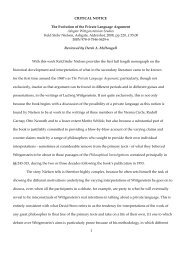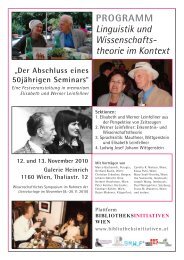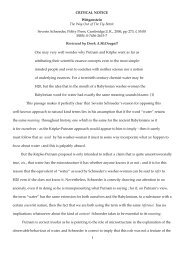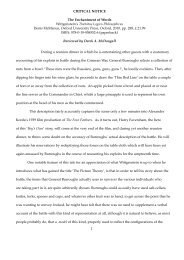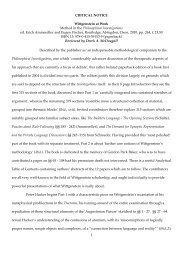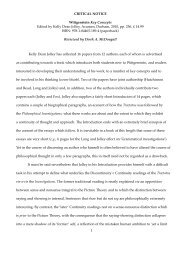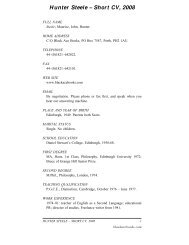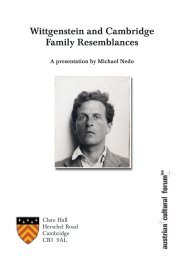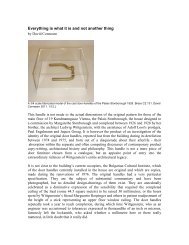Wittgenstein's Philosophical Investigations A Critical Guide
Wittgenstein's Philosophical Investigations A Critical Guide
Wittgenstein's Philosophical Investigations A Critical Guide
Create successful ePaper yourself
Turn your PDF publications into a flip-book with our unique Google optimized e-Paper software.
we share in how our rulers and tape-measures should in practice be used. Consequently, if we<br />
wish to resolve a dispute about the actual length of an item as determined by a particular tool in<br />
cases where some doubt or inconsisency has arisen, then we will employ appropriate criteria within<br />
these particular contexts - checking with other rulers etc. - to determine where the fault arises. The<br />
proper practical ‘standard’ of what a metre is, is in this way carried by all the tape-measures and<br />
rulers that there are, insofar as they are all used in the agreed practice of (metric) measurement.<br />
Jacquette’s idea that ‘the standard metre bar can be used as intended to check the accuracy of metre<br />
sticks designed for industrial and household use’ (Ibid., 53), whilst not obviously inaccurate, only<br />
serves to mislocate any genuine role that can have been originally granted to the metre bar by the<br />
French National Assembly.<br />
In the course of his exposition, Jacquette raises a fourth question, one relating to the Tractatus,<br />
about the significance of Wittgenstein’s statement about the standard metre bar for the meaning of<br />
the claim that one can attribute neither being nor non-being to elements, ‘a point that has not usually<br />
been emphasized by commentators on PI 50’ (Ibid., 52); and here his final answer, not unreasonably,<br />
is that ‘He seems to want only to understand what it would mean for someone - his earlier self -<br />
to deny that fundamental elements could be the meaningful subjects of existence or non-existence<br />
predications’ (Ibid., 59).<br />
Prior to his section about Saul Kripke on the standard metre, Jacquette provides a thought<br />
experiment which strangely neglects the usual surrounding circumstances in which measurements<br />
take place. If, on his example, we make a replica from the standard metre bar in Paris, and the replica<br />
is at some point used to ‘measure’ the standard bar, then if there is a discernible difference in the<br />
expected result of measurement, there will be no way of telling which bar had altered in length, or<br />
even if both bars have actually changed. This is the basis for his suggestion that certain alternative<br />
possibilities ‘cannot be criteriologically distinguished in practice’ (Ibid., 57). But it is perfectly clear<br />
that this little scenario could never be realised in practice, precisely because it is proposed in the<br />
absence of any normal surroundings which would provide available criteria enabling us to determine<br />
what changes in the bars, if any, had in fact occurred. This has a bearing on his criticism of Kripke.<br />
14



